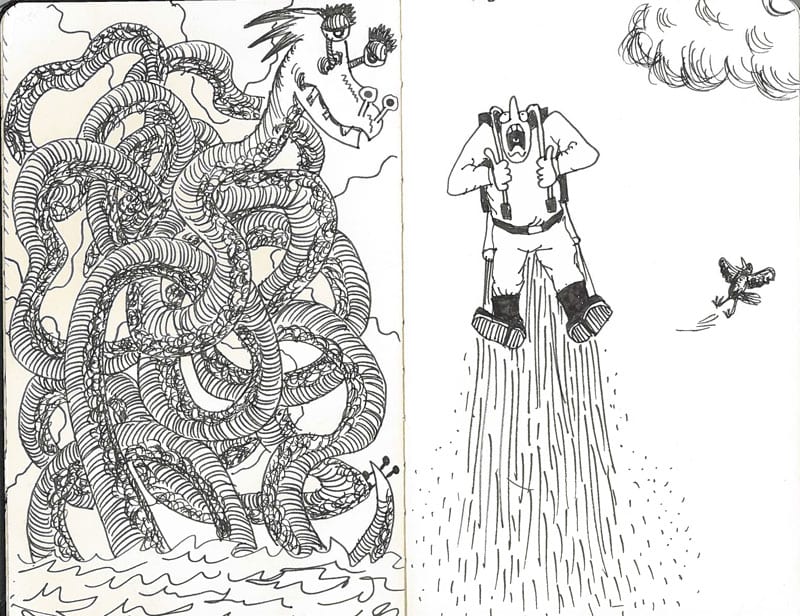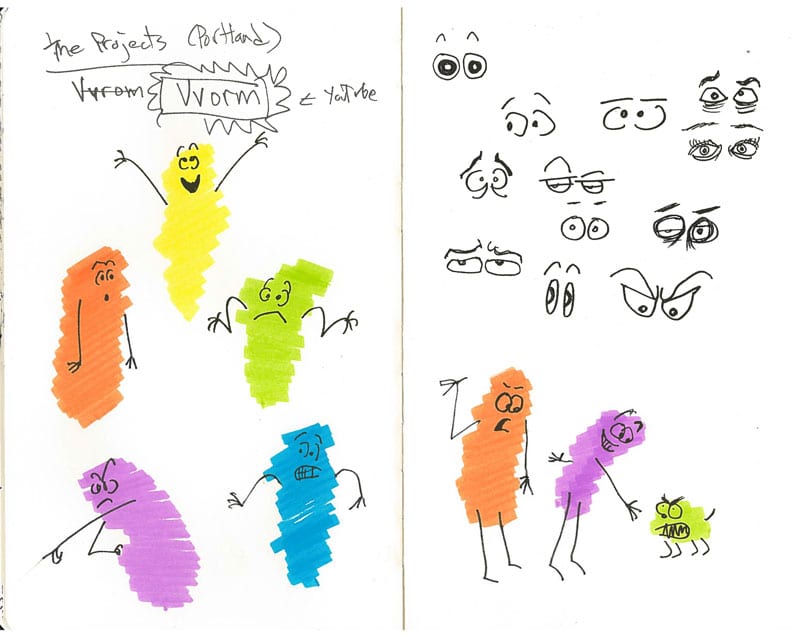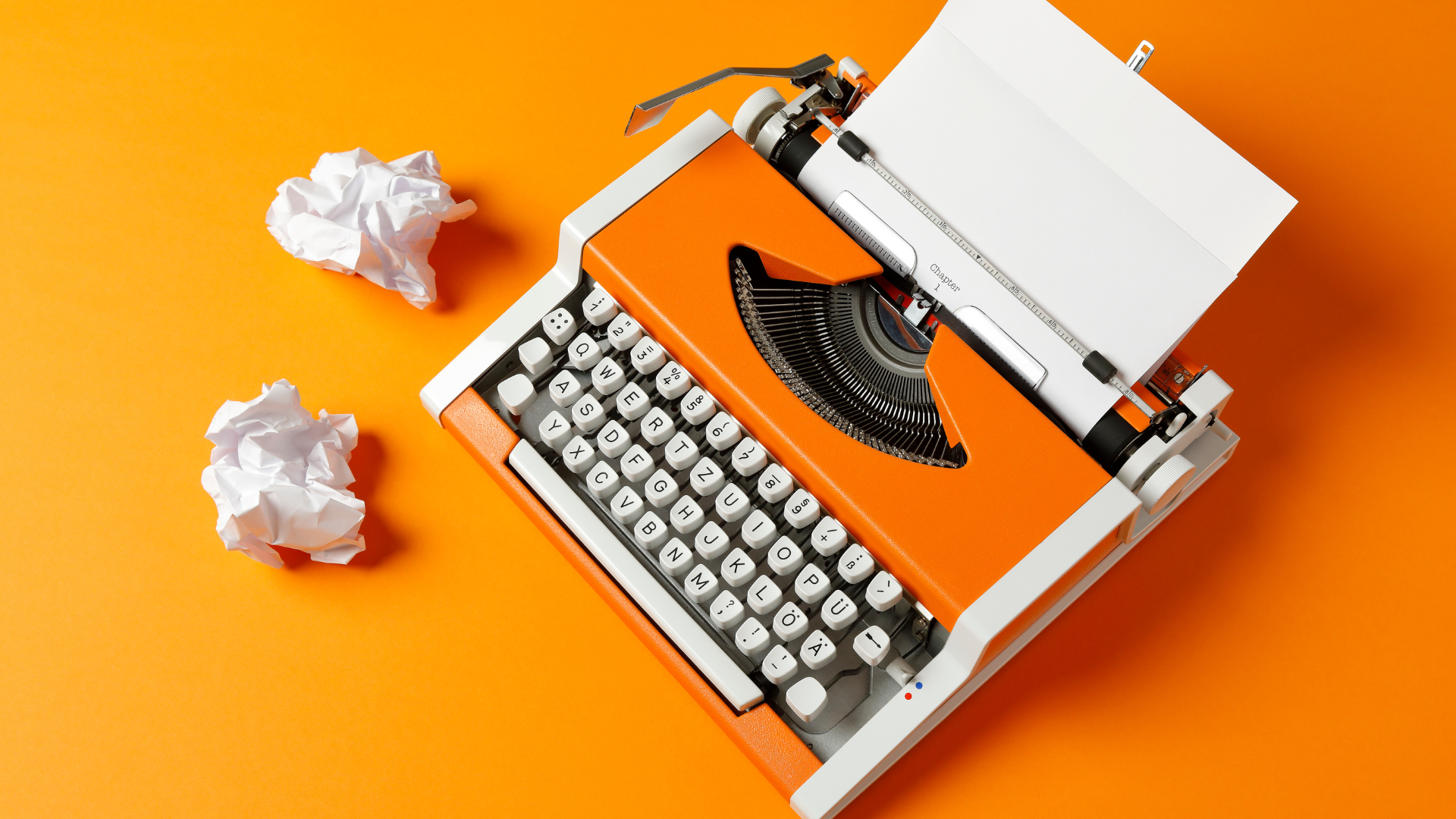What’s more interesting?
“This”
Or
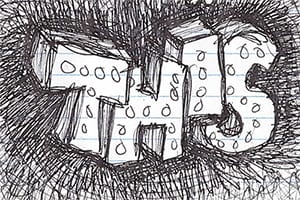
Or, to take another example, Ketchum’s Organizational Development team asked me, in my role as an internal communications specialist, to convey some tips for good writing and speaking. Rather than just throwing together an article, I suggested sharing the tips via a graphic communication, In order to explain what I had in mind, I sketched out a few quick options:
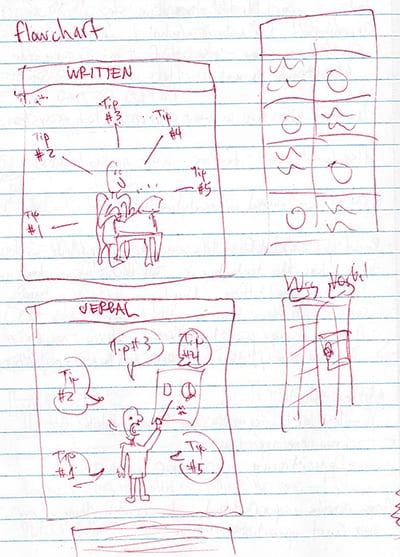 Describing my intentions took less time than a verbal explanation, and it resulted in a faster green light and stronger support from my clients.
Describing my intentions took less time than a verbal explanation, and it resulted in a faster green light and stronger support from my clients.
Being able to communicate your ideas visually isn’t about making the prettiest drawing – it’s about conveying your ideas in the most efficient and engaging way. A diagram or a thumbnail sketch can energize your audience much more than another paragraph of words. Even when words need to take the lead – as with an especially nuanced or specialized subject – pictures can play a valuable supporting role.
But before you plead, “I’m not an artist!” let me say that you don’t need natural talent, just the commitment to practice communicating visually – and the best way to do that is by keeping a sketchbook. Doing so is an ongoing exercise in thinking visually, and it literally requires only three things – blank paper, a pencil and your mind.
The physical act of carrying a sketchbook is an ongoing reminder that the opportunity to communicate visually is always in your hands, and the best way to tap its potential is to make a habit of using it. The more things you try, the more comfortable you’ll be, and before you know it you’ll be scribbling with the best of them. Here are four different ways you can get started.
1. Draw What You See. Don’t know what to draw? Just look around. It’s invaluable to put your mental filters aside and just try to make a faithful rendition of what’s in front of you – a tree, a person, a building, the scintillating conference-room décor, etc. Even if wouldn’t hang the result on your wall, the process forces you to look at things more closely – maybe even to truly see them for the first time.
2. Record Your Ideas. Many people use technology to take notes, but don’t underestimate the freedom and flexibility that comes with holding a pencil. Ideas come in many shapes and sizes, and, in a sketchbook, it’s easy to make a little diagram or map of what you’re thinking. Even if you jot some words down first, a sketchbook is a constant nudge to ask yourself: Is there another way I can be conveying this? If the answer is yes, then your canvas is right there.
3. Collect Things. Maybe your mind runs more to collage, picking and choosing images from other sources – photos, magazines, Tumblr, whatever. That’s great! A sketchbook is an excellent place to cut things out and stick them together in different configurations. You can use these juxtapositions as the basis of further drawings or explanations.
4. Make Stuff Up. I’ll be honest, this is my favorite. Sometimes, just putting a pencil to paper without any agenda whatsoever is the most liberating thing of all. The first moments can be terrifying – even with no audience beyond yourself, it’s easy to feel pressured to deliver something wonderful. But the more you just sit back and let it happen, the more rewarding the experience will be. The unconscious is an overpowering creative resource, and letting your hand do the thinking for a few minutes is a great way to surf on the amazing waves that are churning in your brain at all times.
In sum, a sketchbook is a portable creative laboratory, where you can concoct all manner of experiments in visual communication. And like any experiment, many are bound to fail. But the more you try, the more you learn, and the more you’ll be able to bring your visual thinking to bear on the many different kinds of communications – large and small, official and personal – that make up your day.
